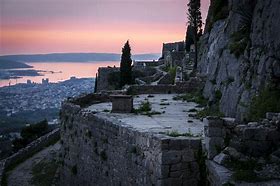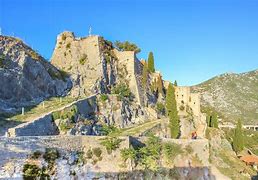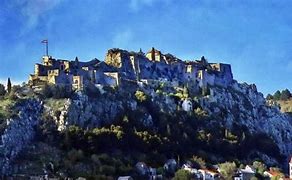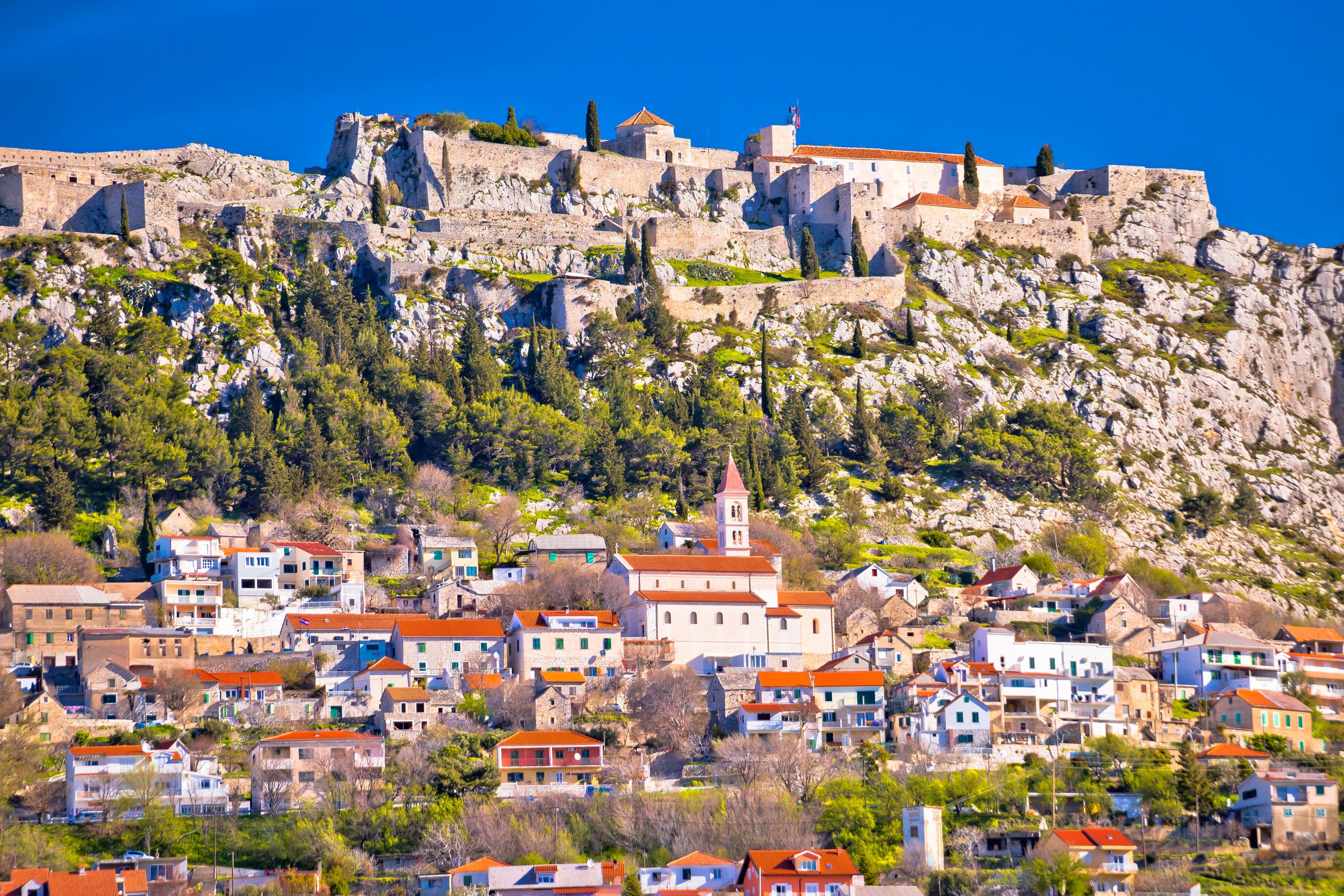Your basket is currently empty!
Perched majestically on a dramatic rocky cliff face, gazing down upon the vibrant city of Split and the shimmering expanse of the Adriatic Sea, Klis Fortress stands as one of Europe’s most formidable and historically significant medieval strongholds. For centuries, this imposing structure served as a vital bulwark, a stone fist guarding the volatile border between Christian Europe and the relentless expansion of the Ottoman Empire. Its strategic importance and unyielding resistance against overwhelming odds earned it a fearsome and well-deserved reputation as the “Key to Dalmatia,” a title that perfectly encapsulates its pivotal role in the defense of Central Europe and the broader Christian world.

A Strategic Masterpiece Born of Stone and Terrain
The brilliance of Klis Fortress lies not merely in its sturdy stone walls, which have withstood countless assaults, but in its unparalleled geographical position. It is meticulously integrated into a narrow mountain pass that threads its way between the rugged Mosor and Kozjak mountains and the coastline of the Adriatic Sea. This unique and unforgiving topography meant that Klis controlled the only viable land route into central Dalmatia, effectively making it an indispensable choke point for any invading army, whether from the east or the north.
From its elevated vantage point, perched hundreds of meters above the surrounding landscape, the fortress’s defenders commanded an extraordinary panoramic view. They could spot approaching enemy armies miles away across the plains, valleys, and even the distant sea. This unparalleled early warning system, combined with the sheer height and precipitousness of the cliffs upon which it rests, enabled them to unleash a devastating barrage. They rained down arrows, hurled massive rocks, and poured burning tar upon any unfortunate attackers attempting to scale its formidable, seemingly insurmountable slopes. So legendary was its resistance, even to its adversaries, that the Ottoman Turks, renowned for their military prowess and engineering feats, themselves dubbed it “Klis-Çelik” – literally “Klis-Steel” – a powerful testament to its unyielding and seemingly unbreakable nature. This name alone speaks volumes about the awe and frustration it inspired in its besiegers.

Echoes of Empire: From Roman Origins to Medieval Might
The strategic importance of Klis was recognized long before the medieval era. Archaeological evidence suggests the site was fortified even in Roman times, likely serving as a lookout point or a small military outpost guarding the trade routes into the Roman province of Dalmatia. After the collapse of the Western Roman Empire, the fortress gained renewed significance. It became a crucial stronghold for the early Croatian dukes and kings, serving as one of their primary seats of power and defense against various invaders, including the Avars and later the Franks.
During the medieval period, as Croatian kingdoms rose and fell, Klis often changed hands, coveted by local nobles, Hungarian kings, and Venetian doges, all vying for control of this vital gateway. Each new ruler, recognizing its strategic value, added to its fortifications, transforming it into the multi-layered, seemingly impenetrable complex we see today. The existing structure, with its three distinct defensive lines, reflects centuries of continuous construction, adaptation, and reinforcement, each layer adding to its impregnability.

The Great Siege of 1537: A Legend of Defiance and Sacrifice
The annals of Klis are replete with tales of heroism and desperate struggle, but none are more legendary or poignant than the Great Siege of 1537. For over two decades prior to this fateful year, the fortress had been subjected to relentless Ottoman assaults, yet it stubbornly refused to fall. It stood as a thorn in the side of Ottoman expansion into Europe. Its most iconic defender during this prolonged period was Petar Kružić, a valiant Croatian nobleman and captain, who, with a meager force of often no more than 300 Uskoks – fierce Croatian irregular soldiers renowned for their guerrilla warfare tactics and daring raids – held off vast Ottoman armies.
In 1537, the Ottomans, determined to finally break Klis’s resistance, launched their most ambitious siege yet. A massive Ottoman force, estimated at an overwhelming 10,000 troops, encircled the fortress. Despite being outnumbered by more than thirty to one, Kružić and his brave defenders employed ingenious guerrilla tactics. They launched daring night raids from the fortress, striking at enemy camps and supply lines. They used the treacherous mountainous terrain to their advantage, ambushing Ottoman patrols. And, from their high battlements, they unleashed a devastating hail of arrows, stones, and particularly effective, burning tar and pitch onto the attackers below, turning the steep slopes into a death trap.
The siege dragged on for weeks, a testament to the defenders’ extraordinary courage, resilience, and tactical brilliance. Food and water dwindled, but the spirit of the Uskoks remained unbroken. Ultimately, the fortress did fall, but only after a prolonged and brutal struggle that encompassed 25 years of relentless Ottoman pressure and numerous failed assaults. Kružić himself perished in the final, desperate days of the 1537 siege, but his legacy of defiance and self-sacrifice became a powerful national myth, inspiring generations of Croats in their fight for freedom. The fall of Klis was a significant, albeit hard-won, Ottoman victory, opening the way for further expansion into Dalmatia. However, the immense cost in lives and resources for the Ottomans demonstrated just how formidable Klis and its defenders truly were.

A Modern Fantasy Icon: Klis and Game of Thrones
In a fascinating modern twist, Klis Fortress found new global fame in 2014 when it was chosen as a key filming location for the immensely popular HBO series Game of Thrones. The fortress served as the imposing backdrop for the fictional city of Meereen, one of the great Slaver Cities in Essos. It was here that Daenerys Targaryen, the “Breaker of Chains,” famously crucified the slave masters who had oppressed the city’s inhabitants, a scene that became iconic to fans of the show. The visual grandeur of Klis, with its ancient stone walls, commanding views of the surrounding landscape, and undeniable historical gravitas, perfectly captured the epic scale and raw power dynamics of the fantasy world. For visitors and locals alike, it’s now common to hear the amusing quip, often delivered with a wry smile: “The Turks couldn’t take it, but the Dothraki did!” – a humorous nod to its unconquered past and its celebrated cinematic present. This connection has brought a new wave of international tourists, eager to walk the same paths as their favorite characters while also discovering the fortress’s incredible real history.
Why Klis Matters: A Symbol of Enduring Resistance
Today, Klis Fortress stands not just as a remarkably well-preserved historical monument but as a profoundly powerful symbol. It represents the enduring struggle between different cultures and empires – the Christian West and the Ottoman East – that shaped this part of Europe for centuries. It is a tangible reminder of the volatile borderlands where civilizations clashed and defined their identities. More profoundly, it illustrates how a relatively small force, when combined with strategic terrain, unwavering determination, and ingenious tactics, can defy overwhelming odds and hold off even the most powerful empires for extended periods. Klis remains a proud testament to human courage, resilience, and the spirit of freedom, an “unconquered stronghold” in spirit and legend, if not always in physical fact. Its story echoes through the ages, continuing to inspire and captivate those who gaze upon its mighty walls.

